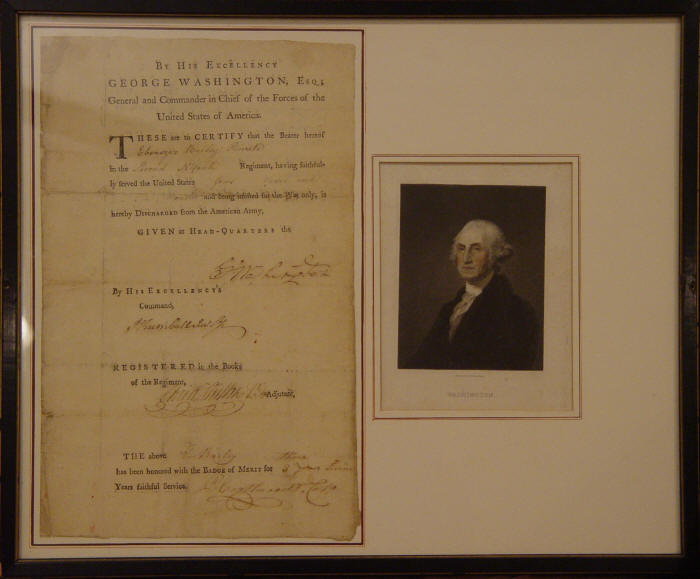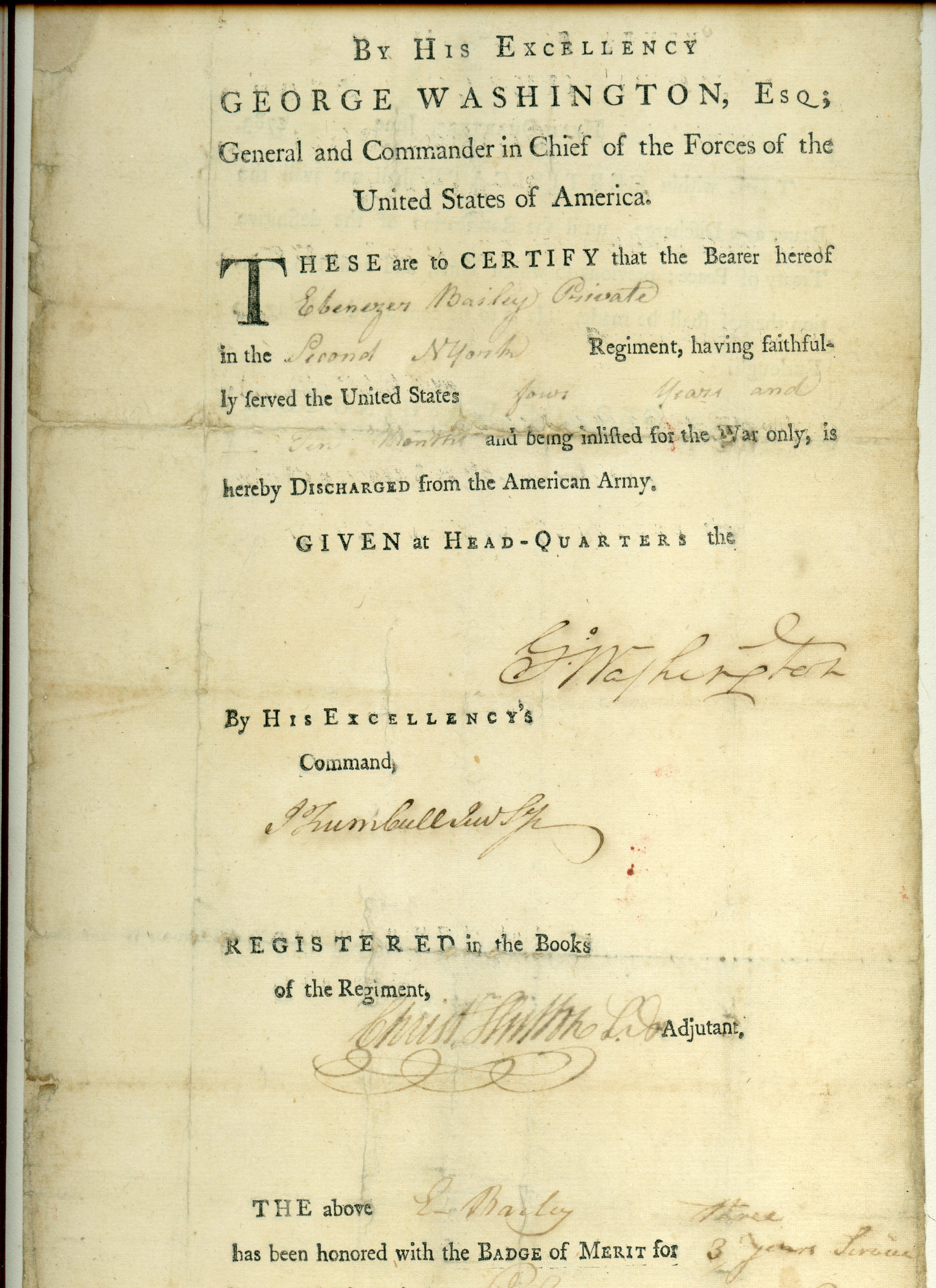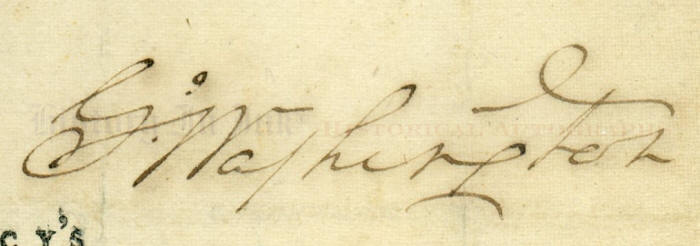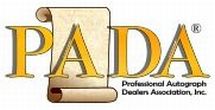


1431401
George Washington
Scroll down to see images of the item below the description
Washington signs a discharge for a private in the Second New York Regiment,
which saw action in several important battles, including the decisive Battle of Yorktown
George Washington, 1732-1799. 1st President of the United States, 1789–1797. Partially printed Document Signed, G Washington, one page, 8½" x 13½", American Army Headquarters [Newburgh, New York], no date [June 1783]. Countersigned by Jonathan Trumbull, Jr. Framed with a portrait of Washington.
General Washington, as ”Commander in Chief of the forces of the United States of America," signs this discharge for Ebenezer Bailey, a private in the Second New York Regiment of the Continental Army. Washington insisted on signing all of the discharges personally out of respect for his troops.
The Second New York was authorized on May 25, 1775. Its initial enlistments ended on December 31 of that year. Thus, this discharge is from the second formation of the regiment, which was authorized on January 19, 1776, an ultimately furloughed at Washingtonʼs headquarters at Newburgh, New York, on June 2, 1783. In between, its soldiers saw action in the Invasion of Canada (1775), the Battle of Valcour Island (1776), the Battle of Saratoga (1777), the Battle of Monmouth (1778), the Sullivan Expedition (1779), and the final Battle of Yorktown, at which British Lord and Lt. General Charles Cornwallis surrendered his army to combined American and French forces under the command of Washington and the French Compte de Rochambeau, leading to the negotiated end of the Revolutionary War.
We have not examined this document out of the frame, but from the slight bleed-through of printerʼs ink, it appears that this is one of the documents that bears a reverse notation, signed by Washington in type, delaying its effectiveness as a discharge until the formal peace treaty with Great Britain was concluded. Those documents have the following printed notation on the back: “the within certificate shall not avail the Bearer as a Discharge, until the Ratification of the definitive Treaty of Peace; previous to which Time, and until Proclamation thereof shall be made, He is considered as being on Furlough. george washington." On April 18, 1783, Washington issued general orders announcing the “Cessation of Hostilities between the United States of America and the King of Great Britain,” but the Treaty of Paris, which formally ended the war, was not signed until September 3. The Second New York Regiment was disbanded on November 15, 1783, and Washington made his famous farewell to his troops and resigned his commission the following December.
This document is scarcer than some because it includes the award of the Badge of Merit at the bottom. Washington announced the “Badge of Military Merit" in his general order of August 7, 1782, issued to the Continental Army from his headquarters at Newburgh. Washington directed that the badge, which he designed, be in "the figure of a heart in purple cloth, or silk, edged with narrow lace or binding." Washington intended it to designate a military order for soldiers who exhibited not only “instances of unusual gallantry in battle,” but also"extraordinary fidelity and essential service in any way." Washingtonʼs writings show that he referred to the “Badge of Military Merit" as the “Badge of Merit,” and Washingtonʼs general order of August 7, 1782, directed that the names of recipients be enrolled in “the book of merit." The badge is thought to be the first in modern history to be presented to common soldiers rather than to high-ranking officers. Washington noted that the “road to glory in a patriot army and a free country is thus open to all."
Many of these discharge documents were carried by Revolutionary War soldiers long after the war and thus are folded, worn, and faded. This one has dark signatures by both Washington, whose signature is 3¼" long, and Jonathan Trumbull, Jr. The document has been silked for preservation. It has five horizontal folds, and there is wear in two of them, with slight paper loss that affects some of the printing and one word of the hand engrossment. There is also some edge chipping, mostly along the left edge, and a fold split at the left end of the upper fold, affecting nothing. The signatures are unaffected. Overall the document, as far as we can tell from seeing it in the frame, is in very good to fine condition.
The document is framed in a narrow antique wood frame with a portrait of Washington to an overall size of 18¾" x 15¼".
_____________
This item has been sold, but
click here to see other
Presidents and First Ladies items
that we are offering.



